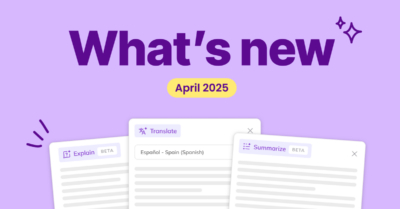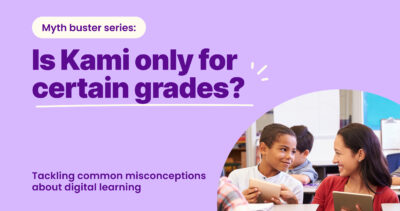Shirin Bradfield
Conducting student check-ins with your class is important in so many ways; they help build self-awareness, self-regulation, and a more trustworthy learning environment. They can also help students build social-emotional skills for Social-Emotional Learning (SEL) and help strengthen relationships both inside and outside the classroom community.
So it comes as no surprise that centering mental health in the classroom and reassuring students that sharing their feelings is important, is vital!
Emotional check-ins can be at the start of class or multiple times during the lesson. They could be altered to work for any school year: Elementary School, Middle School, or High School.
You can introduce these check-in discussions through a number of techniques, either one-on-one, in small groups, or as a whole class. Any changes in emotional state can impact their learning for the day, so teachers need social awareness and adaptability to be able to better support students’ emotions.
Here are 8 ways to check in with student emotion as a class:
1. Signalling
Have your learners stick their thumbs out to show if they are good (thumbs up), bad (thumbs down), or okay (thumbs in the middle). Alternatively, they can hold up fingers to show their mood: One being bad and five being great! Don’t forget to join in yourself!
Tip: Use this Thumbs Up resource or this Good, Bad, Okay resource to do it digitally. Find more ready-made teaching templates just like these over at the Kami Library!
2. With reflection apps
Use an online reflection app or form to check in with how the students are feeling. This is good for students not having to reveal to the whole class, and teachers can follow up with individual students as necessary. You could also use Exit Tickets at the end of class for a sense of how they’re feeling after the lesson.
Tip: Find a few Kami resources over on this blog or check out our Exit Ticket Templates at the Kami Library.
3. With Emojis
Online or in-person (using printables or getting them to draw it), get your learners to choose a face emoji that expresses their mood. Could also swap out emojis for memes, and get them to show how they feel with a meme.
4. With a worksheet
Use a printable with an emotion wheel, or a list of emotions. Get them to pick an emotion they feel, and explain why (if they feel comfortable sharing) either written or verbally.
5. With colors
Get your learners to choose a color they most identify with emotionally at the time. Either put colored cards on desks or put up colors on the board (either colored paper or on your Kami whiteboard). Get them to identify the color, then in small groups, explain why they chose that color.
6. On their feet
Get your learners to stand up and make a Continuum (line up depending on how they feel) to reflect their emotions. Ask multiple questions including easier ones to warm them into the Continuum.
7. In their workbook
Ask your learners to draw up a table in the back of their workbook, or on their digital devices, to keep a journal of how they are feeling each day. Then it’s there to reflect on with peers at the end of the week. Or teachers and students can check in with the journal to spot if there are patterns.
8. For online/distance learning
On a digital platform, like Zoom, get your learners to describe how they feel through the use of Emoticon reaction, drawing/whiteboard function, or show with thumbs up/down over video.
These are a few simple ways you can start including mindfulness, student well-being, and social-emotional check-ins with your class today. Of course, if a student seems to be in emotional distress or emotionally checked out, be sure to get the help of school counseling services for further steps on how you can support them.
You may also like

Unlocking understanding: Kami’s latest updates designed for every learner

The state of SPED and ELL technology in 2025

